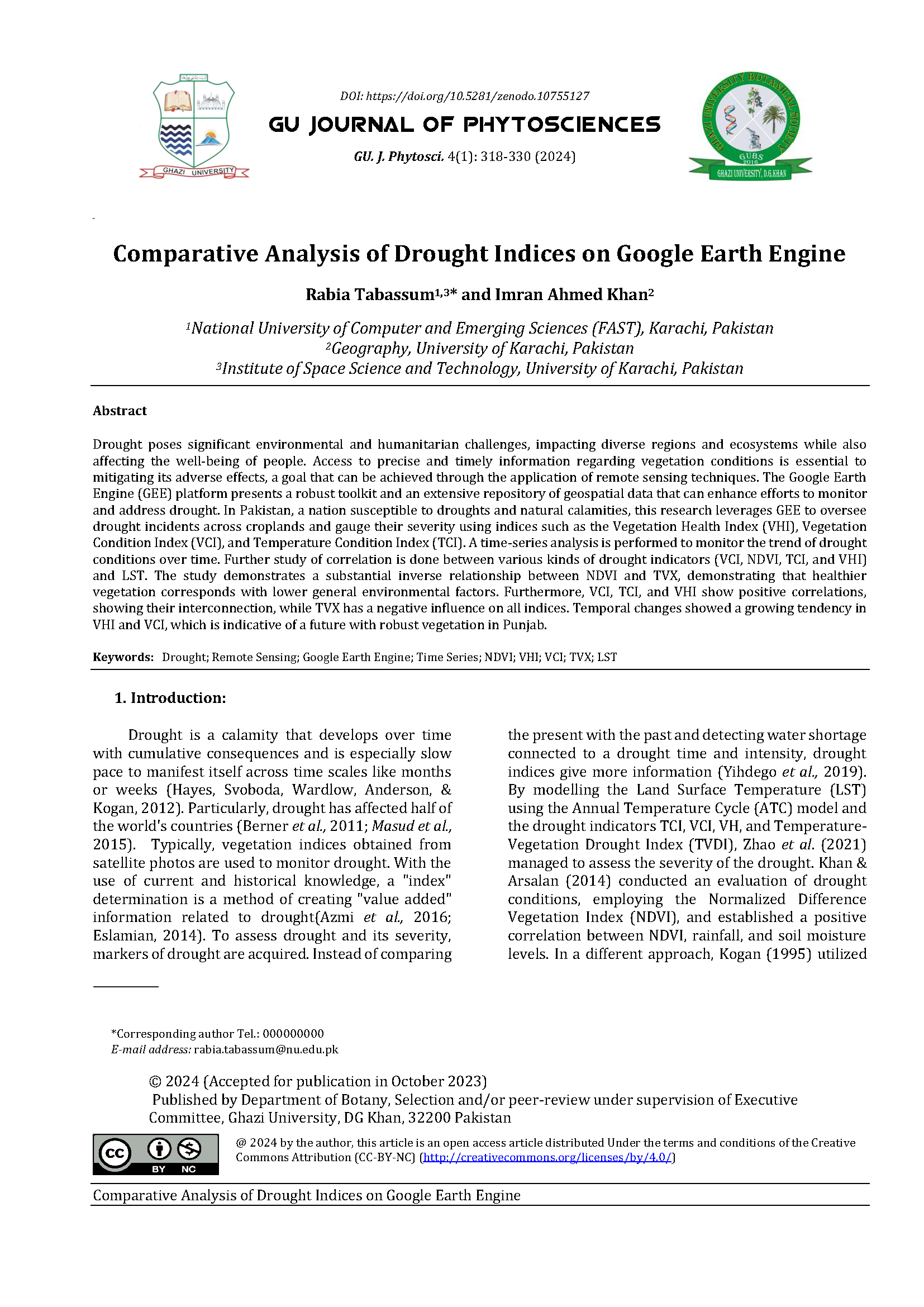Comparative Analysis of Drought Indices on Google Earth Engine
Keywords:
Drought, Remote Sensing, Google Earth Engine, Time Series, NDVI, VHI, VCI, TVX, LSTAbstract
Drought poses significant environmental and humanitarian challenges, impacting diverse regions and ecosystems while also affecting the well-being of people. Access to precise and timely information regarding vegetation conditions is essential to mitigating its adverse effects, a goal that can be achieved through the application of remote sensing techniques. The Google Earth Engine (GEE) platform presents a robust toolkit and an extensive repository of geospatial data that can enhance efforts to monitor and address drought. In Pakistan, a nation susceptible to droughts and natural calamities, this research leverages GEE to oversee drought incidents across croplands and gauge their severity using indices such as the Vegetation Health Index (VHI), Vegetation Condition Index (VCI), and Temperature Condition Index (TCI). A time-series analysis is performed to monitor the trend of drought conditions over time. Further study of correlation is done between various kinds of drought indicators (VCI, NDVI, TCI, and VHI) and LST. The study demonstrates a substantial inverse relationship between NDVI and TVX, demonstrating that healthier vegetation corresponds with lower general environmental factors. Furthermore, VCI, TCI, and VHI show positive correlations, showing their interconnection, while TVX has a negative influence on all indices. Temporal changes showed a growing tendency in VHI and VCI, which is indicative of a future with robust vegetation in Punjab.

Downloads
Published
How to Cite
Issue
Section
License
Copyright (c) 2024 Authors

This work is licensed under a Creative Commons Attribution-NonCommercial 4.0 International License.
All works published by the GU Journal of Phytosciences are freely available to copy, distribute, transmit, and adapt the work provided the original work and source are appropriately cited under a CC BY-NC 4.0 International License. The CC BY-NC licence allows for maximum re-use of open-access materials, and the author has full copyright over their publication. Under this license, users are free to share (copy, distribute, and transmit) and adapt for any purpose, but not for any commercial use (read full legal code).
Under Creative Commons, authors retain copyright in their articles.




